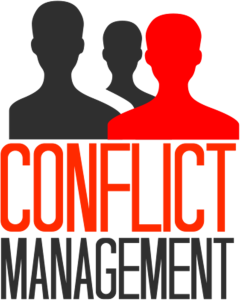1

Effective communication is a building block of successful organizations, In other words, communication acts as organizational blood.
All managers and employees need to be aware of how people behave in order to provide the best working environment. Organizational behavior is about how people may be motivated to work together in more effective ways. The interaction required to direct a group toward a set of common goals is called organizational communication.
In each of these interactions, we are occasionally satisfied but sometimes frustrated by incompetence, insensitivity, lack of coordination, and red tape, all of which result from ineffective organizational communication. A deeper understanding of communication permits us to better comprehend the factors that contribute to a successful organization.
It is difficult to come across a job advertisement which does not mention eligibility criteria such as “communicativeness” or “communication skills.” Concepts such as “organizational communication,” “corporate communication” or “business communication” long ago became key terms for management, entrepreneurship and human resources.
What is meant by “organizational communication”? What are its major functions and types? What are the most important communication skills in the workplace? What are the most common barriers and obstacles to contemporary organizational communication? The answers to these and other questions throughout this course will give you a better understanding of the phenomenon and process of organizational communication.
The importance of communication in an organization can be summarized as follows:
- Communication promotes motivation by informing and clarifying the employees about the task to be done, the manner they are performing the task, and how to improve their performance if it is not up to the mark.
- Communication is a source of information to the organizational members for decision-making process as it helps identifying and assessing alternative course of actions.
- Communication also plays a crucial role in altering individual’s attitudes, i.e., a well informed individual will have better attitude than a less-informed individual. Organizational magazines, journals, meetings and various other forms of oral and written communication help in molding employee’s attitudes.
- Communication also helps in socializing. One cannot survive without communication.
- Communication also assists in controlling process. It helps controlling organizational member’s behavior in various ways. There are various levels of hierarchy and certain principles and guidelines that employees must follow in an organization. They must comply with organizational policies, perform their job role efficiently and communicate any work problem and grievance to their superiors. Thus, communication helps in controlling function of management.
An effective and efficient communication system requires managerial proficiency in delivering and receiving messages. A manager must discover various barriers to communication, analyze the reasons for their occurrence and take preventive steps to avoid those barriers. Thus, the primary responsibility of a manager is to develop and maintain an effective communication system in the organization.
So, organizational communication refers to the forms and channels of communication among members of organizations such as corporations, nonprofits or small businesses. Studies have found a strong relationship between the levels of communication in an organization and job performance and satisfaction. Organizational communication can be formal or informal, flow in various directions and make use of various media.
Directions of Communication
Organizational communication takes place upward, downward and horizontally. Downward communication flows from the managerial and executive levels to the staff through formal channels such as policy manuals, rules and regulations and organizational charts. Upward communication is initiated by staff and directed at executives; it frequently takes the form of a complaint or a request. Horizontal communication occurs when colleagues meet to discuss issues of common interest, resolve problems and share information.
Leading

In the book “Organizational Communication: Challenges of Change, Diversity, and Continuity,” William Neher (1997) identifies the five primary functions of business communication as leading, rationalizing, problem-solving, conflict management and compliance gaining. The function of leading is important to enable management to issue instructions in a clear, specific manner so that workers are able to follow them without difficulty. This is generally downward communication.
CONNECT: William Neher: Professor Emeritus at Butler University (LinkedIn)
https://www.linkedin.com/in/william-neher-4742b41a/
Rationalizing

This function enables management to explain the reasons for instructions in a way that workers can understand. In this context, it is downward communication; however, rationalizing is also important for enabling workers to bring issues to the attention of management, using upward communication to do so. If a worker identifies a motivation problem, for example, he may communicate this upward formally to management and use rationalization to highlight the potential impact of the problem on profitability.
Problem-Solving

Most companies hold regular meetings to discuss issues such as production cycles, delivery times, price margins and other areas where unusual situations could arise that may affect the performance of a business. In these meetings, organizational communication plays an important role in tabling problems, brainstorming potential responses and finalizing solutions. In this way, a company obtains maximum benefit from the abilities of those involved in the communication, which flows horizontally and often informally.
Conflict Management

Conflict in the workplace can lead to the loss of talented employees, the lodging of grievances and possibly lawsuits. Managing conflict by bringing all parties together to discuss their differences in a safe, moderated environment is an important function of organizational communications. This type of communication usually involves all three directions of communication, and, although discussions may be informal, the final decisions are usually communicated formally.
Gaining Compliance

Gaining the compliance of employees is necessary for them to adhere fully to instructions. To do this, management needs to listen to feedback from the staff and to take account of their ideas and comments. Feedback or two-way communication can be both upward and downward or horizontal and may be formal or informal, but it is important for a company to enable open communication channels to motivate and achieve the best performance from employees.
TED Talk: Dan Ariely: What makes us feel good about our work?
This course will cover these areas and more as we move through each module. Looking forward to it!
References
Balzer, W. K. & Gillespie, J. Z. (2007). Job satisfaction. In Rogelberg, S. G. (Ed.). Encyclopedia
of industrial and organizational psychology Vol. 1 (pp. 406-413). Thousand Oaks, CA: Sage.
Barnlund, D. C. (2008). A transactional model of communication. In. C. D. Mortensen (Eds.),
Communication theory (2nd ed., pp47-57). New Brunswick, New Jersey: Transaction.
Gatti, Maria (2011). “The Language Of Competence In Corporate Histories For Company
Websites”. Journal of Business Communication: 482–502.
Miller, Katherine (2005). Communication Theories: Perspectives, Processes, and Contexts (2nd
ed.). McGraw-Hill Higher Education.
